

| This limestone statue is thought to be the oldest life-size sculpture surviving from Egypt. It had once been covered with plaster and painted; the eyes were inlaid as well. His appearance becomes traditional for royal portrait sculpture: he wears a simple kilt, a black wig and false ceremonial beard, and the royal headdress. | ||
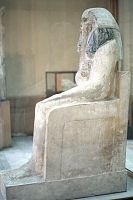
|
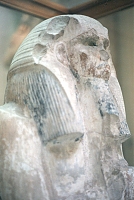
|
King Zoserpainted limestone, found in the small chapel (the "serdab") against the north face of his step pyramid at the funerary complex at Saqqara Dynasty 3, about 2690-2660 BCE |
| Rahotep and Nofret painted limestone, beginning of Dynasty 4, c. 2620 BCE These two separate statues form a unit with the prince, probably a son of King Sneferu, and his wife. The convention was to paint a man's body darker than woman's skin. Both figures have inlaid eyes and Nofret wears a long sheath dress with a mantle, a wide necklace with concentric rings, and a wig with a headband of rosette designs. |
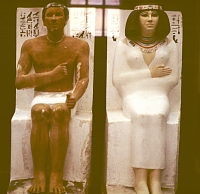
| |
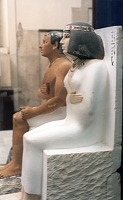
|
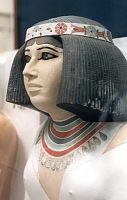
|
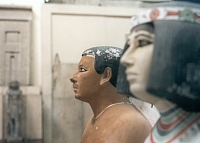
|
| This life-size "ka" statue was discovered at Khafre's valley temple. Like Zoser (above) he is dressed in the traditional costume: a simple kilt, the linen headdress (in this case with the "uraeus"), and the wig and false beard. He sits on a throne with lion's heads at the arms and with a relief representing the union of Upper and Lower Egypt (the intwined lotus and papyrus). Horus is perched at his back, his wings protecting the king, and his presence indicating the divine status of the pharaoh. The figure is dignified and calm, and the pose is compact, with arms close to the body. These features are characteristic of royal portraiture in Egypt for millenia. Khafre (Chephren) diorite Dynasty 4, c. 2575-2525 BCE | ||
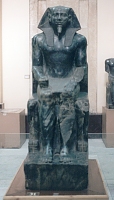
|
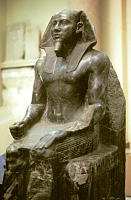
|
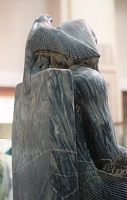
|
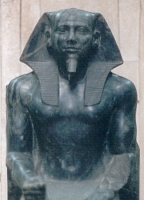
|
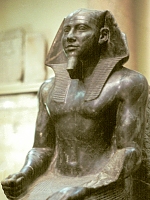
|
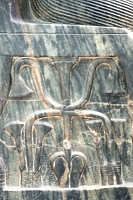
|
| Seated Scribe painted limestone, beginning of Dynasty 5, c. 2475 BCE Scribes occupied a privileged position in ancient Egypt. Still portrait sculptures of scribes are less formal than royal portraits, often seated figures with crossed legs and even sometimes with realistic rolls of fat on the figure's abdomen. Here the scribe sits with a partly unrolled papyrus scroll on his knees. |
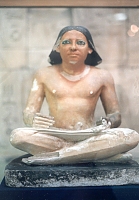
| |
| Left: statuette from the Workers' Tombs at Giza; center: statuette of servant; right: statuette of female brewer, all Dynasty 4 | ||
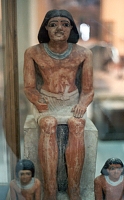
|
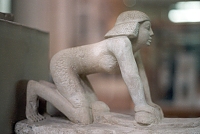
| 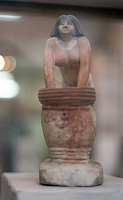
|
 Click here to go to the Egypt Index.
Click here to go to the Egypt Index.
 Click here to return to index of art historical sites.
Click here to return to index of art historical sites.
 Click here to return to index of artists and architects.
Click here to return to index of artists and architects.
 Click here to return to chronological index.
Click here to return to chronological index.
 Click here to see the home page of Bluffton College.
Click here to see the home page of Bluffton College.
